Pituitary tumor transforming gene binding factor: a new gene in breast cancer
- PMID: 20406982
- PMCID: PMC2875163
- DOI: 10.1158/0008-5472.CAN-09-3531
Pituitary tumor transforming gene binding factor: a new gene in breast cancer
Abstract
Pituitary tumor transforming gene (PTTG) binding factor (PBF; PTTG1IP) is a relatively uncharacterized oncoprotein whose function remains obscure. Because of the presence of putative estrogen response elements (ERE) in its promoter, we assessed PBF regulation by estrogen. PBF mRNA and protein expression were induced by both diethylstilbestrol and 17beta-estradiol in estrogen receptor alpha (ERalpha)-positive MCF-7 cells. Detailed analysis of the PBF promoter showed that the region -399 to -291 relative to the translational start site contains variable repeats of an 18-bp sequence housing a putative ERE half-site (gcccctcGGTCAcgcctc). Sequencing the PBF promoter from 122 normal subjects revealed that subjects may be homozygous or heterozygous for between 1 and 6 repeats of the ERE. Chromatin immunoprecipitation and oligonucleotide pull-down assays revealed ERalpha binding to the PBF promoter. PBF expression was low or absent in normal breast tissue but was highly expressed in breast cancers. Subjects with greater numbers of ERE repeats showed higher PBF mRNA expression, and PBF protein expression positively correlated with ERalpha status. Cell invasion assays revealed that PBF induces invasion through Matrigel, an action that could be abrogated both by siRNA treatment and specific mutation. Furthermore, PBF is a secreted protein, and loss of secretion prevents PBF inducing cell invasion. Given that PBF is a potent transforming gene, we propose that estrogen treatment in postmenopausal women may upregulate PBF expression, leading to PBF secretion and increased cell invasion. Furthermore, the number of ERE half-sites in the PBF promoter may significantly alter the response to estrogen treatment in individual subjects.
(c)2010 AACR.
Figures

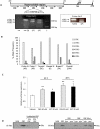
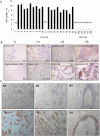
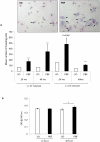
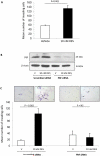
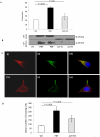
References
-
- Allred DC, Medina D. The relevance of mouse models to understanding the development and progression of human breast cancer. J Mammary Gland Biol Neoplasia. 2008;13:279–88. - PubMed
-
- Boelaert K, Tannahill LA, Bulmer JN, Kachilele S, Chan SY, Kim D, et al. A potential role for PTTG/securin in the developing human fetal brain. FASEB J. 2003;17:1631–9. - PubMed
-
- Boelaert K, Smith VE, Stratford AL, Kogai T, Tannahill LA, Watkinson JC, et al. PTTG and PBF repress the human sodium iodide symporter. Oncogene. 2007;26:4344–56. - PubMed
-
- Chien W, Pei L. A novel binding factor facilitates nuclear translocation and transcriptional activation function of the pituitary tumor-transforming gene product. J Biol Chem. 2000;275:19422–7. - PubMed
-
- Mo Z, Zu X, Xie Z, Li W, Ning H, Jiang Y, et al. Antitumor effect of F-PBF(beta-TrCP)-induced targeted PTTG1 degradation in HeLa cells. J Biotechnol. 2009;139:6–11. - PubMed
Publication types
MeSH terms
Substances
Grants and funding
LinkOut - more resources
Full Text Sources
Medical

